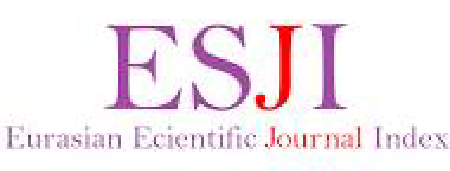BALANCING DEBT AND EQUITY IN EMERGING MARKETS: THE CASE OF UZBEKISTAN’S JOINT-STOCK CORPORATIONS
Abstract
This study investigates capital structure optimization in joint-stock companies in Uzbekistan amid a transforming economic landscape. As the country shifts from a centrally planned to a market-oriented economy, understanding the determinants of debt-to-equity decisions becomes crucial. Drawing upon trade-off and pecking order theories, the paper explores the effects of market volatility, interest rates, inflation, asset tangibility, profitability, and financial regulations on corporate financing behavior. Empirical analysis of Uzbekistan’s automotive and chemical firms from 2013 to 2025 highlights trends in leverage ratios and their relationship to macroeconomic factors. The findings suggest that high interest rates and market uncertainty have led firms to adopt more conservative, equity-based financing strategies. Additionally, the increasing importance of intangible assets, coupled with reforms in financial regulation and currency liberalization, has influenced firms’ capital structure flexibility. By comparing trends across Uzbekistan and other emerging markets, this research offers insights into how local firms can optimize financial stability and performance through strategic capital structure decisions in volatile economic environments.
References
Ali, M., & Ahmad, N. (2020). The relationship between capital structure and firm performance: Empirical evidence from Pakistan. International Journal of Business and Social Science, 11(2), 45–56.
Alnaa, E. S., & Ahiakpor, F. (2020). Exchange rate volatility and its impact on foreign direct investment in developing countries. Journal of Emerging Market Finance, 19(1), 52–73.
Bhowmik, R., & Wang, S. (2020). Financial time series forecasting using GARCH models: Evidence from emerging markets. Journal of Risk and Financial Management, 13(6), 112.
Board of Governors of the Federal Reserve System. (2000). Monetary policy report to the Congress.
Bokpin, A. G. (2010). Financial policy and capital structure decisions of firms: Evidence from emerging market economies. Studies in Economics and Finance, 27(2), 134–145.
Damodaran, A. (2009). The dark side of valuation: Valuing young, distressed, and complex businesses. FT Press.
Eshov, M., et al. (2021). An econometric analysis of stock market volatility in Uzbekistan during the COVID-19 pandemic. Asian Journal of Economics and Finance, 3(2), 65–78.
Faez, A., & Soheila, K. (2015). The effect of capital structure on firm performance: Evidence from Iran. International Journal of Economics, Commerce and Management, 3(2), 1–15.
Gajurel, D. (2006). Macroeconomic influences on corporate capital structure. Unpublished Master’s thesis, University of Birmingham.
Gherghina, C. Ş., Armeanu, D., & Joldeș, C. C. (2021). COVID-19 pandemic and emerging market stock returns: A dynamic panel data analysis. Journal of Risk and Financial Management, 14(3), 132.
Gordon, R., & Shoven, J. B. (1982). The effects of taxation on capital accumulation. University of Chicago Press.
Hadi, A. R. A., et al. (2019). The impact of the Asian Financial Crisis on corporate financing in Malaysia. Asian Economic Papers, 18(1), 75–98.
Karpavičius, S., & Yu, F. (2017). Interest rates and corporate financial policy: Evidence from international data. Emerging Markets Finance and Trade, 53(6), 1209–1221.
Khushnud, Z., et al. (2020). The impact of inflation and interest rates on capital structure: Evidence from Uzbekistan. Central Asian Economic Review, 2(3), 33–46.
Kodasheva, G., et al. (2017). Financial sector development and bank credit in Kazakhstan and Uzbekistan. Eurasian Economic Review, 7(1), 89–108.
Kotarba, M. (2016). The new role of banking regulation: Enhancing financial stability and innovation. Journal of Banking Regulation, 17(3), 199–210.
Lim, C. S., Macias, J. A., & Moeller, T. (2020). Intangible capital and the capital structure of the firm. Journal of Financial Economics, 135(2), 532–554.
Malik, A. (2023). Financial leverage and capital structure in emerging economies: A sectoral analysis. Journal of Emerging Markets, 17(4), 91–107.
Meghanathi, P., & Chakrawal, K. A. (2021). Capital structure and firm performance: Evidence from India. International Journal of Financial Research, 12(1), 101–114.
Molla, I. M. (2020). Pecking order theory vs. trade-off theory: Empirical evidence from developing countries. Asian Economic and Financial Review, 10(6), 672–686.
Nasritdinova, G. (2018). The investment climate and policy development in Uzbekistan. Uzbekistan Journal of Economics and Innovation, 4(1), 24–35.
Nisha, N., & Ghosh, B. (2018). Financial leverage and firm performance: Empirical evidence from Indian listed firms. Global Business Review, 19(2), 367–385.
Nusa, A. R. Y. P., et al. (2020). Impact of leverage on firm performance: A study of Jordanian industries. International Journal of Business Management, 8(3), 22–31.
Olang, A. M. (2017). The effect of capital structure on financial performance of listed firms in Kenya. Journal of Finance and Accounting, 5(1), 1–13.
Peles, C. Y., & Sarnat, M. (1979). Taxes, capital structure, and the cost of capital: An international comparison. National Tax Journal, 32(4), 429–441.
Rakhimov, A. S. (2023). Government policy and foreign direct investment in Uzbekistan: Recent reforms and future prospects. Central Asian Affairs, 10(1), 55–72.
Ranaweera, T. (2003). Interest rates and inflation in transition economies: Evidence from Central Asia. IMF Working Paper, WP/03/85.
Selpiana, R. K., & Badjra, B. I. (2018). Factors affecting stock price volatility in Indonesia: Evidence from the LQ45 Index. International Journal of Economics and Management Studies, 5(6), 12–20.
Shikumo, H. D. (2021). Asset tangibility and financial structure: Evidence from Kenyan manufacturing firms. African Journal of Economic Policy, 28(1), 72–90.
Shukhratovich, S. S., Zukhriddin, K., & Qizi, S. M. Z. (2020). Investment policy and economic transformation in Uzbekistan. Eurasian Journal of Economic Studies, 5(2), 91–106.
Smith, K. J. (2007). Financial regulation and the evolution of market structures. Journal of Economic Perspectives, 21(3), 145–164.
Solms, V. J. (2020). Regulatory burdens in financial services: A comparative study. Journal of Finance and Risk Perspectives, 9(1), 45–59.
Suyunov, A. (2021). Economic shocks and institutional resilience in Uzbekistan. Uzbekistan Development Review, 6(2), 41–60.
Urooj, F. S., Zafar, N., & Sindhu, I. M. (2019). The role of capital adequacy in moderating market volatility in emerging economies. Journal of International Banking and Finance, 33(5), 415–432.
Vives, X. (2019). Digital disruption in banking: Impact on regulation and competition. Annual Review of Financial Economics, 11, 243–272.
Zubairu, I., & Iddrisu, J. A. (2019). Exchange rate risk and firm performance: Evidence from West Africa. International Journal of Finance and Economics, 24(1), 102–112.






















